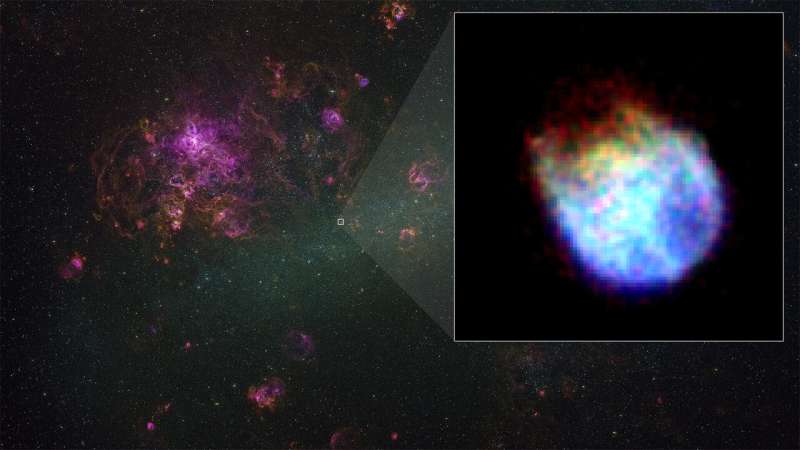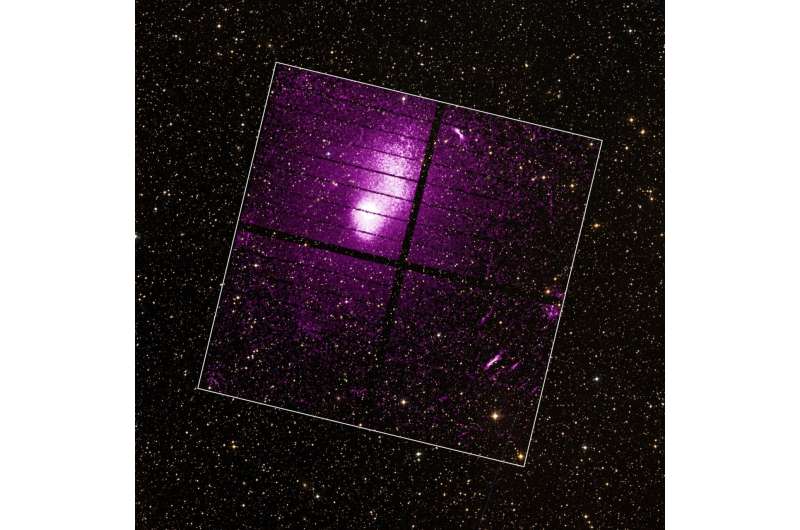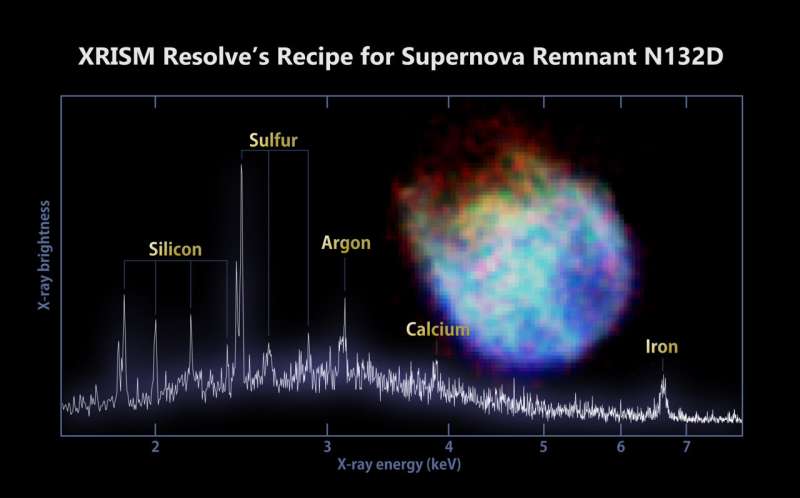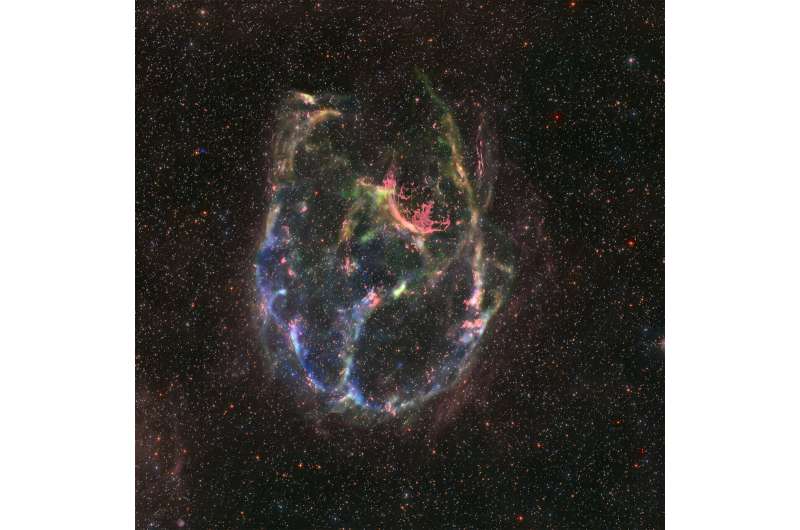This article has been reviewed according to Science X's editorial process and policies. Editors have highlighted the following attributes while ensuring the content's credibility:
fact-checked
trusted source
proofread
NASA/JAXA XRISM mission reveals its first look at X-ray cosmos

The Japan-led XRISM (X-ray Imaging and Spectroscopy Mission) observatory has released a first look at the unprecedented data it will collect when science operations begin later this year.
The satellite's science team released a snapshot of a cluster of hundreds of galaxies and a spectrum of stellar wreckage in a neighboring galaxy, which gives scientists a detailed look at its chemical makeup.
"XRISM will provide the international science community with a new glimpse of the hidden X-ray sky," said Richard Kelley, the U.S. principal investigator for XRISM at NASA's Goddard Space Flight Center in Greenbelt, Maryland. "We'll not only see X-ray images of these sources, but also study their compositions, motions, and physical states."
XRISM (pronounced "crism") is led by JAXA (Japan Aerospace Exploration Agency) in collaboration with NASA, along with contributions from ESA (European Space Agency). It launched on Sept. 6, 2023.
It's designed to detect X-rays with energies up to 12,000 electron volts and will study the universe's hottest regions, largest structures, and objects with the strongest gravity. For comparison, the energy of visible light is 2 to 3 electron volts.
The mission has two instruments, Resolve and Xtend, each at the focus of an X-ray Mirror Assembly designed and built at Goddard.

Resolve is a microcalorimeter spectrometer developed by NASA and JAXA. It operates at just a fraction of a degree above absolute zero inside a refrigerator-sized container of liquid helium.
When an X-ray hits Resolve's 6-by-6-pixel detector, it warms the device by an amount related to its energy. By measuring each X-ray's energy, the instrument provides previously unavailable information about the source.
The mission team used Resolve to study N132D, a supernova remnant and one of the brightest X-ray sources in the Large Magellanic Cloud, a dwarf galaxy around 160,000 light-years away in the southern constellation Dorado. The expanding wreckage is estimated to be about 3,000 years old and was created when a star roughly 15 times the sun's mass ran out of fuel, collapsed, and exploded.
The Resolve spectrum shows peaks associated with silicon, sulfur, calcium, argon, and iron. This is the most detailed X-ray spectrum of the object ever obtained and demonstrates the incredible science the mission will do when regular operations begin later in 2024.
"These elements were forged in the original star and then blasted away when it exploded as a supernova," said Brian Williams, NASA's XRISM project scientist at Goddard.

"Resolve will allow us to see the shapes of these lines in a way never possible before, letting us determine not only the abundances of the various elements present, but also their temperatures, densities, and directions of motion at unprecedented levels of precision. From there, we can piece together information about the original star and the explosion."
XRISM's second instrument, Xtend, is an X-ray imager developed by JAXA. It gives XRISM a large field of view, allowing it to observe an area about 60% larger than the average apparent size of the full moon.
Xtend captured an X-ray image of Abell 2319, a rich galaxy cluster about 770 million light-years away in the northern constellation Cygnus. It's the fifth brightest X-ray cluster in the sky and is currently undergoing a major merger event.
The cluster is 3 million light-years across and highlights Xtend's wide field of view.
"Even before the end of the commissioning process, Resolve is already exceeding our expectations," said Lillian Reichenthal, NASA's XRISM project manager at Goddard. "Our goal was to achieve a spectral resolution of 7 electron volts with the instrument, but now that it's in orbit, we're achieving 5. What that means is we'll get even more detailed chemical maps with each spectrum XRISM captures."

Resolve is performing exceptionally and already conducting exciting science despite an issue with the aperture door covering its detector. The door, designed to protect the detector before launch, has not opened as planned after several attempts. The door blocks lower-energy X-rays, effectively cutting the mission off at 1,700 electron volts compared to the planned 300.
The XRISM team will continue to explore the anomaly and is investigating different approaches to opening the door. The Xtend instrument is unaffected.
Provided by NASA's Goddard Space Flight Center

















